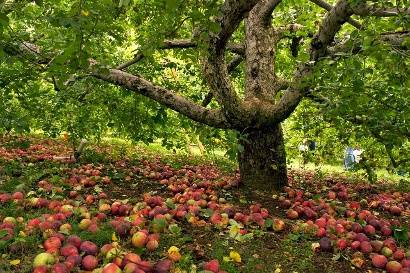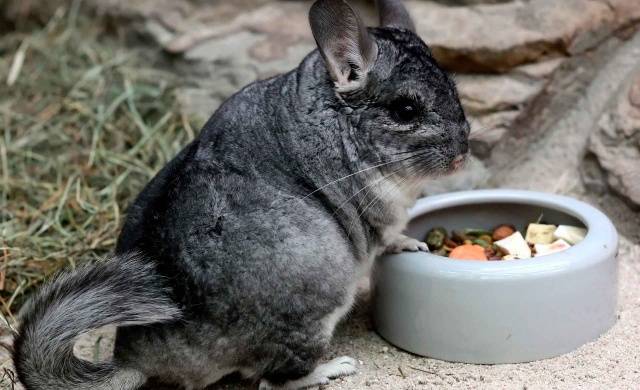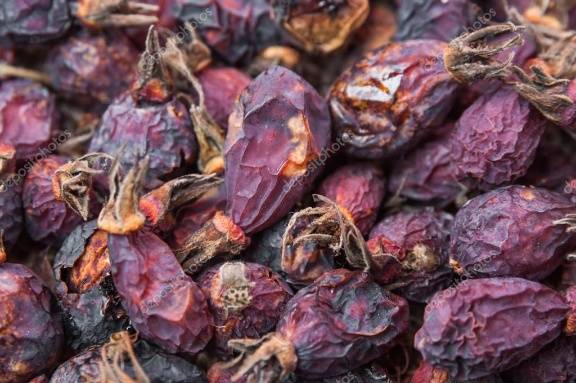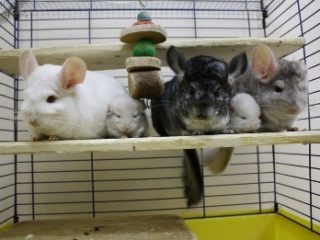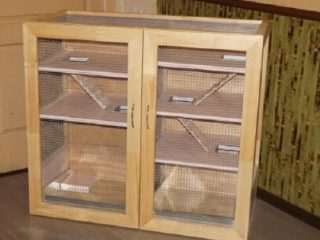Content
South America has long remained an isolated continent on which very special flora and fauna have formed. South American animals are very different from the fauna of other continents. Chinchillas are no exception.
The digestive system of these high-mountain animals was formed in a harsh, arid climate. Chinchillas are adapted to eating very rough and dry food and are completely unable to digest succulent food. As a result of domestication, animals' digestive systems have changed enough to be able to digest high-quality hay. Although even today the preferred food is dry stems of cereal plants, which are usually called straw.
And today, at home, the main food for chinchillas is hay. But hay is often impossible to find in urban areas. Chinchilla owners succumb to the assurances of salespeople in pet stores and buy rabbit feed or mixtures for guinea pigs for their animals. In fact, chinchilla pellets should only be suitable for chinchillas. This animal has a very delicate gastrointestinal tract and a weak liver. The internal organs of chinchillas are often unable to cope with food for productive animals.
If there are no special granules, animals can be given a grain mixture of flakes of various cereals. The downside to pellets, grain mixtures and even meadow hay is that all of these components of the diet are too soft. Chinchilla teeth are adapted to feeding on very hard foods and are constantly growing. If an animal cannot grind its teeth, “hooks” form on its teeth, which injure its tongue and cheeks and prevent the animal from feeding.
Therefore, one of the components that can be given to a chinchilla in addition to food are branches and trunks of fruit trees.
You cannot give:
- cherry;
- plum;
- peach;
- cherries;
- apricot;
- bird cherry;
- branches of other tree species of the plum genus.
All these tree species contain a significant dose of hydrocyanic acid in their bark and leaves. Under the influence of gastric juices, hydrocyanic acid decomposes, turning into cyanide. Even dry leaves are dangerous. This is why you should not give chinchillas branches from stone fruit trees.
Mulberry branches and trunks are very suitable. It is believed that chinchillas can also be given branches of apple and pear trees. Apples and pears also contain hydrocyanic acid in their seeds, but the concentration of the substance in the branches is much lower.
To grind down the incisors of chinchillas, special mineral stones are placed, but these stones do not allow grinding down the molars, on which “hooks” are formed. That is why chinchillas must have branches and tree trunks with bark in their cage. Chewing very hard foods can wear down your back teeth.
Feeding chinchillas at home - it’s better to do it yourself
The diet of chinchillas at home is very different from the diet of their wild relatives.At first glance, it seems that everything is the same: dry grass, dried (fallen) berries, grains of cereal plants. In fact, the domestic chinchilla eats other plants with a different chemical composition, and this creates additional difficulties in creating a complete diet.
You can try to buy full-strength pellets at a pet store. But chinchillas, having ceased to be exotic in the apartment, still remain little-known creatures for the industry. Therefore, it is easier to find rabbit food at the pet store. Even if you were able to buy food for chinchillas, there is no guarantee that this product actually contains all the ingredients necessary for South American animals. Because of this, experienced chinchilla breeders are forced to create their own diet for their animals and make their own grain mixtures. And knowing what a chinchilla eats at home will not be superfluous.
Hay
Chinchillas have a very long intestine, in which fiber is decomposed and absorbed. For normal digestion, animals need a large amount of roughage. And the coarser the hay, the better. A chinchilla needs from 20 to 30 g of hay per day, but it must be a top quality product.
Mold or the smell of mycelium emanating from hay is unacceptable. Yellow colored hay means it was exposed to rain while drying. This means that such hay may be contaminated with mold fungi. Gray and black hay is unsuitable for chinchillas to eat. It is better not to even bring dusty hay into the house, so as not to become infected with aspergillosis, since the dust is actually mold spores.
High-quality hay should be green in color and have a pleasant smell. If hay is not readily available, it can be partially replaced with grass meal.This is alfalfa dried using a special technology and crushed into powder. A little dry alfalfa is also added to the animals' diet as a source of protein. This is good food for an old animal, but eating only flour will not wear down the teeth, which will lead to problems with the oral cavity. Therefore, if in addition to grass meal, the chinchilla cannot be provided with straw, it must be given tree branches.
The advantage of hay over grass meal is also that the animal can be provided with round-the-clock exercise. Rough, low-nutrient hay can be given to animals ad libitum. If food is always freely available, the chinchilla will not eat more than it needs.
Corn
Special granules can be given as grain feed. High-quality granules will be green in color. But this color signifies the high percentage of alfalfa contained in the pellets. The second option is to make the grain mixture yourself. Chinchillas can be given a mixture of whole grains or flakes. Experienced chinchilla breeders do not recommend feeding animals with whole grains, since sometimes the grain is stored in poor conditions, and when purchasing on the market there is no way to determine the quality of the product.
Feeding chinchillas with flakes is safer for animals, since during the production of flakes the grain undergoes high-temperature treatment.
Suitable for making the mixture:
- buckwheat;
- wheat;
- barley;
- corn;
- oats
You can also add some flaked peas as a substitute for alfalfa hay.
If the animal can be provided with free access to hay, then regarding concentrates there is a rule about how many times a day you need to feed your chinchilla grain food.Since these are nocturnal animals, they are given grain mixture once a day at night. The norm for one head is 1 teaspoon per day.
The norm is approximate. The exact amount is determined experimentally. You can start with a heaped teaspoon. Animals do not need more grain, but if they do not eat this amount, the amount of grain must be reduced.
It is better to underfeed a chinchilla than to overfeed it. If there is less hay than needed, the amount of grain will not be critical.
You can also add seeds, milk thistle and red millet to the grain mixture. But it’s better not to give flax. It is believed that flax improves the quality of wool, but it also contains a lot of oil. In addition, raw flax seeds contain hydrocyanic acid.
Vitamin and mineral premixes for fur-bearing animals are also added to the grain mixture. Or vitamins specifically designed for chinchillas are added to food. The dosage is usually indicated on the package. In premixes, the dosage is usually given based on the number of grams of premix per kilogram of food for fur-bearing animals, since premixes are intended for use on farms.
Granules
This is a separate topic, since the manufacturer often claims granules as a complete diet for chinchillas. Theoretically, this is how it should be. The basis of the granules is grass flour. Also, the granules should contain grain feed and all the vitamins and minerals necessary for the normal functioning of the animal. If you can find high-quality granules, you can assume that the problem with chinchilla food has been solved.
In this case, in addition to pellets, the animals will only need tree branches for grinding down their teeth.In this case, fruit and berry supplements will serve as a dessert for the animal. Taking into account the fact that chinchillas need to grind their teeth, about 30% of the diet will consist of tree branches as roughage and treats. The remaining 70% of the diet will come from granulated food.
The digestive systems of these animals are different from the gastrointestinal tract of chinchillas. In addition, “forbidden” sunflower seeds are often added to rabbit pellets. This supplement helps the rabbit gain weight before slaughter. It is clear that in this case no one cares about the condition of the rabbit’s liver.
Diet supplements
Hay and grain are the main components in the diet of chinchillas. But to replenish the missing elements, the animals are given a little dried berries, vegetables and fruits. Berries you can give to rodents:
- rose hip;
- barberry;
- blueberries;
- hawthorn.
The standards are very small. Rose hips can be given one berry per day, 1-2 barberries or blueberries. You can also feed chinchillas with blueberry leaves and branches.
Juicy food leads to indigestion and diarrhea in chinchillas. Therefore, even carrots, apples and pears are given only dried and no more than one slice per week.
You can also give animals pumpkin and melon seeds. Norm for pumpkin seeds: 1-5 per week per chinchilla. It is believed that pumpkin seeds can get rid of worms.
Chinchillas have a very weak liver, not adapted to absorb fatty acids, which are found in abundance in nuts and oilseeds.When feeding these animals with nuts, they may have a very beautiful skin, but their lifespan will be reduced from 20 years to 5-6.
Dry herbs and flowers
Also an additive to the diet of chinchillas. Herbs and flowers are also given in dried form. From the flowers you can give echinacea and calendula. Dried nettle will be useful. Nettle has more protein than alfalfa and can easily replace alfalfa hay. Nettle can also be given instead of carrots due to the large amount of provitamin A. But it must be borne in mind that nettle has the property of thickening the blood, and in large quantities this herb will have a bad effect on the health of animals. This is especially true for pregnant females. Due to the lack of oxygen, which too thick blood cannot supply to the placenta, puppies may die in the womb.
If it is necessary to change food, the new one is introduced by mixing with the old one and gradually increasing the proportion of the new product. When buying a chinchilla, it is better to ask the seller for a supply of food for a week, since if there is a sudden change in food, the animal may die.
Water
When keeping in a city apartment, special attention must be paid to this point. Due to the requirements for water disinfection, liquid straight from the tap is of little use for chinchillas. Especially in those regions where water is still disinfected with chlorine. Before giving such water to animals, it must be settled to get rid of chlorine compounds. And then boil, removing excess salt.
If you don’t want to take risks, you can buy bottled drinking water in a regular store. Now there is an opinion that such water is even worse than tap water, but there is no chlorine or bacteria in the bottles. In the case of chinchillas, this is the main thing.
To prevent chinchillas from polluting the water, it is better to use nipple drinkers. Such drinking bowls are closed on almost all sides, and in order to drink from it, you need to move the locking ball.
What not to give to chinchillas
Even if your pet begs for something from the table, you need to remember that a chinchilla is a herbivore. In nature, they can eat small insects, but this does not mean that they can be fed meat. Therefore, treats that are forbidden for chinchillas include:
- any animal protein, including eggs. The exception is powdered milk, but this is also for chinchillas on the farm;
- all fermented milk products;
- any flour and bakery products;
- potato;
- fresh vegetables;
- beets, even dry, as they have a laxative effect;
- mushrooms;
- any spoiled chinchilla food.
The chinchilla's diet is much stricter than that of humans. She is not allowed any food from the human table.
Conclusion
With a little experience, preparing a diet for a chinchilla is not particularly difficult. The main thing to remember is that we give all treats to animals not for their sake, but for our own sake. Wanting to show your love. The animal itself does not need this and will not be offended if its owner does not experiment with various products.

